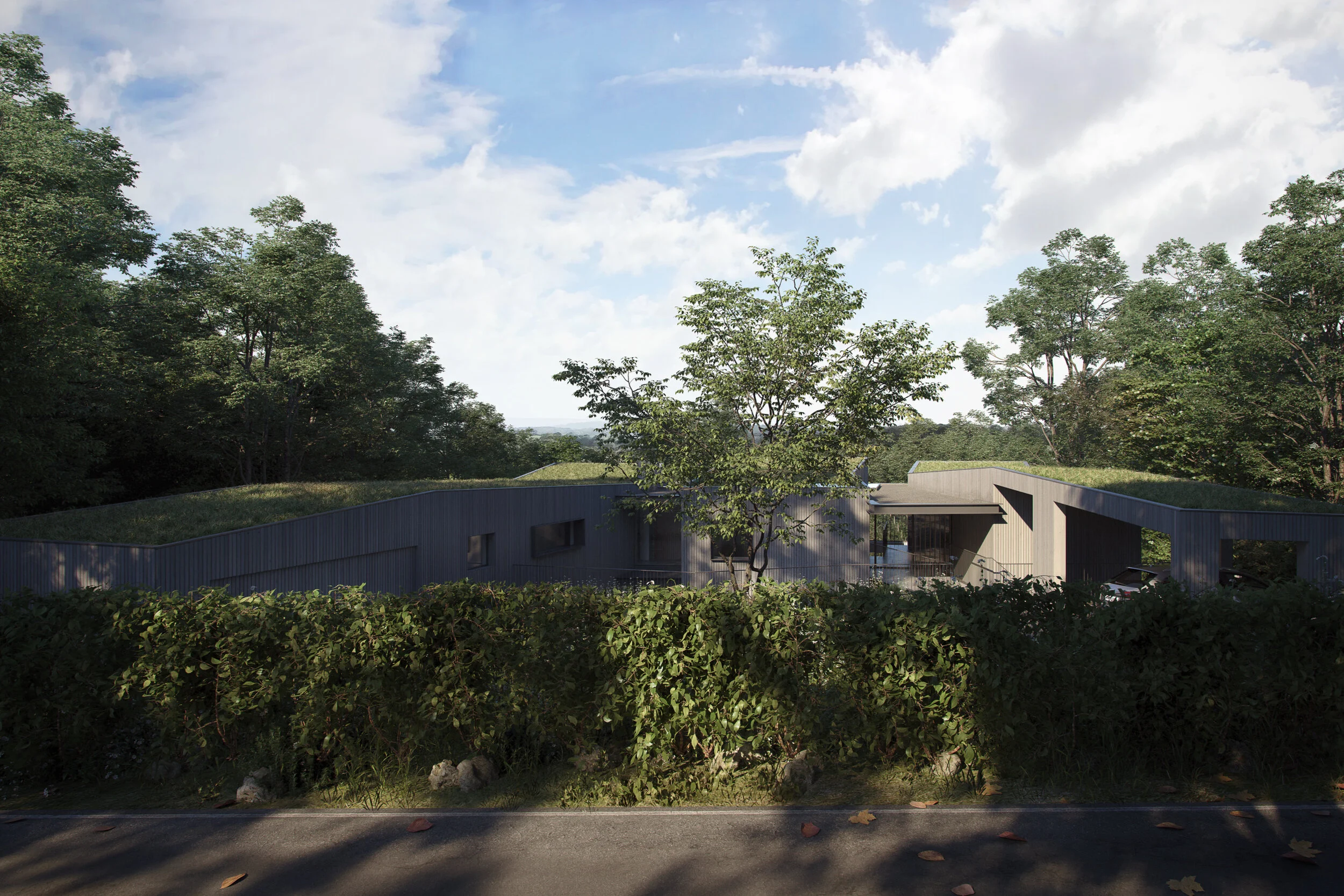AR Design Studio Receive Planning Approval for 'The Well House'
Visualisations
Nu.Ma https://www.numa.pt/
Design Team
Planning Consultants – Planit Consulting
Landscape Architect – Ibbotson Studios
Landscape Visual Impact Consultants – Turley
Description
Winchester based architects AR Design Studio have received planning approval for a private bespoke new build house, The Well House, located in a rural village on the outskirts of Winchester. The approval comes at the end of a year long planning process and a resubmission in which the practice worked closely with the local council and a team of consultants to develop a contemporary scheme that responds carefully to both its built and natural surroundings.
The site is hidden down a quiet residential lane with a strong visual connection to the surrounding verdant context. From the lane the site steps and slopes towards its east boundary to meet the Itchen Navigation, a SSSI and the South Downs National Park. The existing traditional three storey house sits at the highest part of the site, leaving it visually exposed when viewed from across the Itchen Valley.
While some neighbouring houses stand proud of the topography along the lane others can be seen to be sunk within the landscape, responding to the sloped landscape whilst taking advantage of the long views. Within the built context is a diverse range of houses. The piecemeal fashion along the street lacks local distinctiveness giving a sense of being evolved organically over time. This variation of buildings provides the opportunity for a proposal to add to the eclectic mix, whilst being sensitive to its context.
Upon visiting the site, it was felt that the significance of the site’s rural setting would have to inform the backbone of any design that was delivered. This rationale has been translated to the proposed design, derived from the initial concept of hunkering down into the sloping landscape to appear visually lost in the hillside against the wooded backdrop. The scheme uses a materiality of timber and brick, the timber volumes floating atop a solid brick base. From the road, the timber cladding blends with the context, whilst the heavier brick grounds the scheme.
The design rationale and materiality has been supported through a rigorous design process. Working closely with landscape architects Ibbotson Studios and consultants Turley Associates the scheme has been shown to have a positive response to the surrounding landscape, having a lesser impact than that of the existing house. The scheme was assessed by The Design Review Panel, with their recommendations allowing further development of the design and forming part of the body of evidence for the planning submission. The resulting design demonstrates the ability of well-informed contemporary architecture to exist as part of the diverse street scene without resorting to pastiche.
The existing basement level is excavated to open up the lower portion of the proposed house onto its garden, whilst above this sits the first floor accommodation. Despite the house being two storeys, the lower floor is not visible from the lane and dramatically reduces the built impact.
This first floor is divided up into thee component parts, dictated by function between which are areas of circulation. In doing so the overall mass is broken up which helps the elevation to blend into its wooded backdrop. The first floor elements are then pushed and pulled in order to respond to the accommodation requirements. To the front of the house this creates a sunken courtyard and to the rear this creates some covered outdoor space at ground floor level whilst creating depth in the elevation.
To open up the sunken courtyard to the front of the house each block is splayed, creating a sense of movement within the building and opening up the inbetween spaces. This movement is also mimicked in the roof slope to better reflect that of the surrounding trees and landscaping. The eaves lines facing the street are dropped to minimise the amount of elevation visible while those to the rear open up to the views. These pitched roof elements are proposed to be a green roof planted with assorted wildflowers/perennials that will encourage biodiversity, assist with the water management of the building and soften the appearance of the building when viewed from the lane.
To help the proposal further blend into its context, the landscape strategy removes much of the existing terracing and restores the natural slope of the site, with the aim to create a garden that is wilder in nature and fosters more wildflowers and grasses. In turn this will provide the opportunity for ecological enhancements and habitat creation.
An environmental approach has also been adopted through passive devices, building fabric and technology. Passive environmental devices include the massing and orientation of the building. The three east facing volumes allow the sun to warm the house in the morning, reducing the need for heating. These volumes incorporate overhangs, as well as recessed glazing to provide solar shading to avoid overheating in the summer. This also helps to minimise the amount of light spill. Furthermore, as part of a holistic approach to sustainability, innovative technologies have also been explored, the scheme becoming an eco-house.
As such, the proposal challenges the built context with a contemporary approach, whilst minimising its impact on the surroundings, being environmentally conscious and providing opportunities for biodiversity to flourish. This has resulted in a one-off contemporary design which enhances the architectural distinctiveness of the area whilst blending into the verdant context, creating conditions for the building and its site to thrive in the future.
AR Design Studio is an RIBA chartered architects practice, based in Winchester, Hampshire, specialising in elegant and imaginative contemporary new homes, extensions, renovations and multi-plot developments. AR Design Studio’s architectural expertise and flair has been recognised by winning a number of prestigious industry awards including the UK Property Awards 2019-2020, Royal Institute of British Architects (RIBA) South East 2018 Award and the RIBA South West 2017 Award, in addition to being longlisted for Grand Designs House of the Year Award 2018. With a comprehensive knowledge of planning, AR Design Studio has built a stunning portfolio of bespoke residential projects.
For further information contact info@ardesignstudio.co.uk



